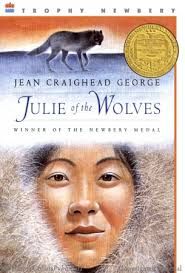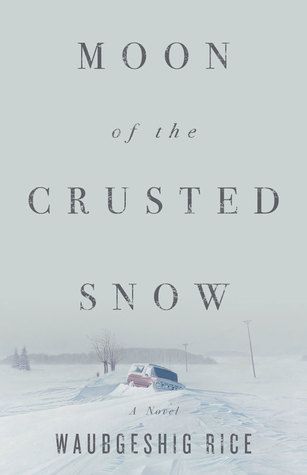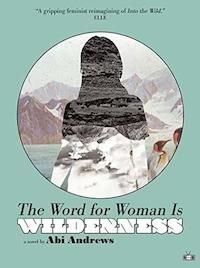
10 Books That Take Place In a Desolate Landscape
Every year I dread winter, but this year seems particularly perilous. In the distance I hear rumblings of a vaccine, but I know I will not get a jab in the arm until the spring or summer. So my winter will be spent inside and at home in cold and snowy Wisconsin.
I don’t like snow and I don’t like the cold, but somehow I’ve been cursed to live in the Midwest where the weather never seems appropriate for my internal body temperature. Remaining inside is the best option, where I can regulate the heat, and keep coronavirus germs far away from my unvaccinated body. Still, I worry about that desolate feeling that creeps in after the holidays, when I start to realize that there’s nothing to look forward to until the weather warms up and I have to endure months of cold and ice and snow.
These ten books represent those feelings—but they’re also good, so read them!
The Terror by Dan Simmons
I watched The Thing for the first time this past Halloween. If you haven’t seen it, it’s about a research team in Antarctica who are attacked by an alien. Their plight is complicated by the snow, ice, and freezing temperatures. It’s a great movie and features Kurt Russell in an iconic hat.
If you like The Thing you will like Dan Simmons’s creepy, arctic horror novelization of the doomed 1845 Franklin Expedition. Although this novel has a supernatural element, it is nature that is the true horror in this book.
Cold Earth by Sarah Moss
Sarah Moss has very devout readers. It seems like if you read one of her books it is impossible not to read the rest. Cold Earth, her first novel, takes place in Greenland during an archaeological dig while a plague rages through the rest of the world. The plot might seem extravagant, but Moss is extremely adept at writing complex stories in succinct spaces. This is a dystopian novel, but it is also a ghost story; fusing history and the future together with brilliant results. Sarah Moss deserves her fans.

The Sunlight Pilgrims by Jenni Fagan
I always imagine the world ending in icy darkness, which is why I’m drawn to apocalyptical stories that feature cold and snowy ecological disasters. This is the exact opposite of the ecological crisis we’re currently facing, which might be another reason I’m drawn to this kind of world-ending vision.
In Sunlight Pilgrims, the world is ending and all that’s left is survival. Although most people are moving south to escape the impending freeze, Dylan is determined to make it back to his home in Scotland to bury his mother and grandmother’s ashes. In the highlands, he meets Estella and her mother Constance and they prepare to meet the end together.
Julie of the Wolves by Jean Craighead George
Julie lives with a pack of wolves after she runs away from an arranged marriage. Before she can join the pack, she has to learn their behaviors so they’ll accept her into their community.
I read this book when I was an adult and loved it.
Moon of the Crusted Snow by Waubgeshig Rice
A third post-apocalyptic thriller on the list, and it won’t be the last! As winter arrives in a small northern Anishinaabe community, their power is lost and food needs to be rationed. Soon, white visitors from the south begin to arrive, and their arrival brings death to the small community. Evan Whitesky, a younger member of the community, attempts to discover why people are dying, and why the white strangers keep invading his community.
The Wanderer by Peter van den Ende
This is a wordless picture book, similar to Shaun Tan’s The Arrival. It’s about a small paper boat, alone on the ocean, sailing through the night, disturbed and supported by sea monsters that ebb and flow throughout the boat’s journey. The small boat seems to find itself in the midst of someone else’s story, but it is only the boat’s perspective that we follow. Full of sea monsters, storms, and loneliness; Peter Van Den Ende’s black and white illustrations are awe-inspiring.
Ice by Anna Kavan
Anna Kavan legally changed her name after a suicide attempt and time spent in a hospital. As the newly dubbed Anna Kavan, she dyed her hair an icy blonde and wrote a collection of stories called Asylum Piece in 1940.
The novel Ice was published in 1967 and its protagonist is an icy blonde heroine, pursued by two men with questionable intentions. The book seems to take place in a post-apocalyptical world, most likely destroyed through nuclear war, and overrun with walls of ice. It’s surreal and hallucinatory, with an ever- evolving landscape.
The Word for Woman is Wilderness by Abi Andrews
When Erin was 19, she would watch Bear Grylls and wonder why it was always men going off and having adventures in the wilderness. Erin decides to find out by traveling through the Alaskan wilderness.
This is part adventure novel, part travelogue, part philosophical examination of our connection with nature. It’s visual and visceral, and completely unique.

Split Tooth by Tanya Tagaq
This is a book about a young woman growing up in the Arctic tundra. The story’s relationship to our reality is tenuous, and instead veers toward the surreal and poetic to describe the midnight sun, Northern Lights, animals, and the connective spirit to the natural world.
It’s a very pretty book, at times feeling more like poetry than prose, which lends itself to the desolate atmosphere that becomes beautiful through the lyricism of Tanya Tagaq’s writing.
Snow Country by Yasunari Kawabata
This is a classic in Japan by the author Yasunari Kawabata, who won the Nobel Prize in 1968.
It’s about a Tokyo dilettante and a country geisha who fall in love on an isolated mountain surrounded by snow and hot springs. This is a slim novel at only 175 pages, but it doesn’t waste a word and remains savory until the end.






















